Zero-molding reduced bubbles,short shots,and flashes achieving low clamping force and low injection pressure
Company Profile
Iwasaki Co., Ltd. was founded in 1955.
They are a plastic molding manufacturer that performs injection molding and blow molding, mainly producing bottles and inner plugs for skin care products and lotions, and stationery parts. In addition to molding, they also carry out post process such as printing and film application in-house.
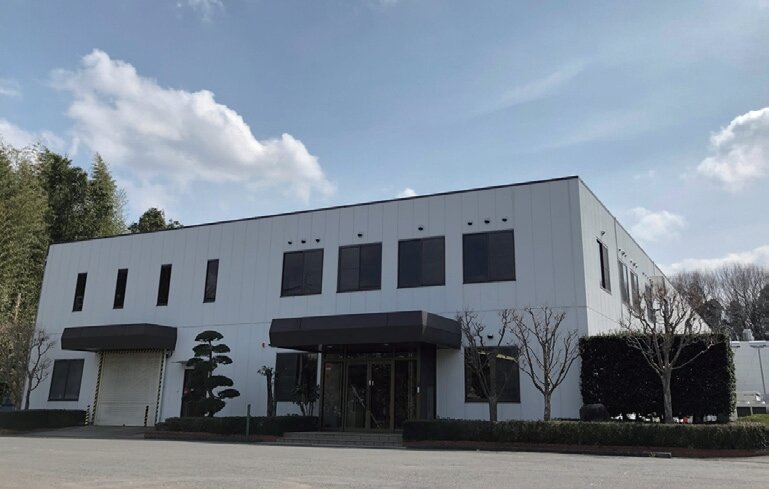 Factory of Iwasaki Co., Ltd.
Factory of Iwasaki Co., Ltd.
Customer Issues
A structural issue when molding inner plugs is the occurrence of bubbles (void) in the thick wall parts. The flow end wall is thin and the resin flow path in the middle is thick-walled, so early filling is necessary to prevent short shots. However, if filling is done too quickly, air will be entrained, and bubbles are more likely to occur in the thick wall section. Furthermore, with multiple cavities (12 cavities), the imbalance in the resin flow when passing through the gate also made filling more difficult.
Since there was an issue with bubbles, they tried to eliminate the bubbles by increasing the injection pressure, but at the same time, they also saw the generation of flashes as a reaction, which was also an issue.
How we supported
1. Finding the best molding process
To solve this problem, they brought their mold to our Chiba Technology Center, where our process engineers and the customer worked together to determine the molding processes and conduct trials. After creating the process for good product, we searched for the minimum value of mold clamping force while confirming the mold clamping force waveform and actual value of the peak mold clamping force.
As a result, the low clamping force allows for better gas escape, resulting in molding that is free of bubbles, short shots, and flashes.
2. Establishment of the technology
To achieve stable molding under optimized processes, we held a study session for Iwasaki's engineers. Without an understanding of the theoretical setting method, it is not possible to apply it when changing mold or molded product, but they are also promoting its use with other mold and are seeing the benefits.
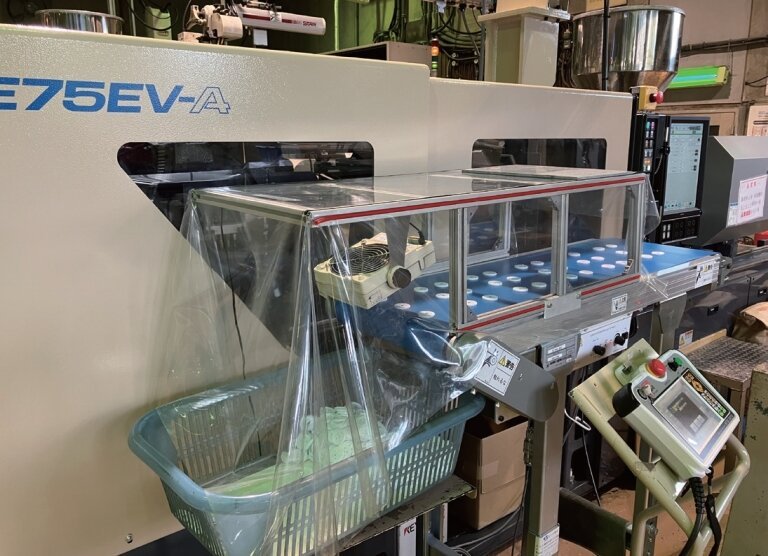 Molding scene
Molding scene
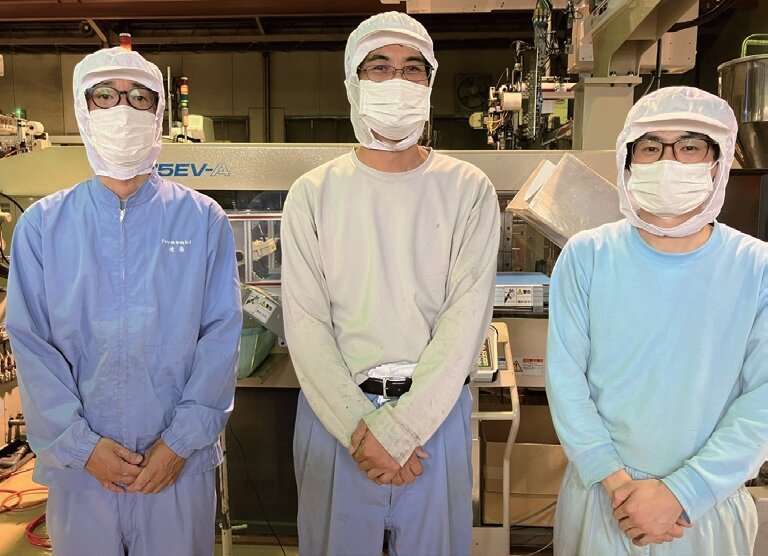 From left: Mr. Watanabe, Mr. Sawashiro, Mr. Tada
From left: Mr. Watanabe, Mr. Sawashiro, Mr. Tada
Specific Effects
Reduced number of defects
In the past, if you increased the mold clamping force to prevent flashes, gas could not escape, and instead short shots occurred, facing a dilemma. The low clamping force function (MCM) allowed the mold clamping force to be reduced to about half of the conventional force, facilitating gas release. The occurrence of bubbles, short shots, and flash has been visibly reduced compared to before.
"When a defect is found, not only does it take time to confirm whether the previous molded product is problem-free, but we sometimes have no choice but to discard the suspect lot. This has led to a reduction in such time and costs," they said.
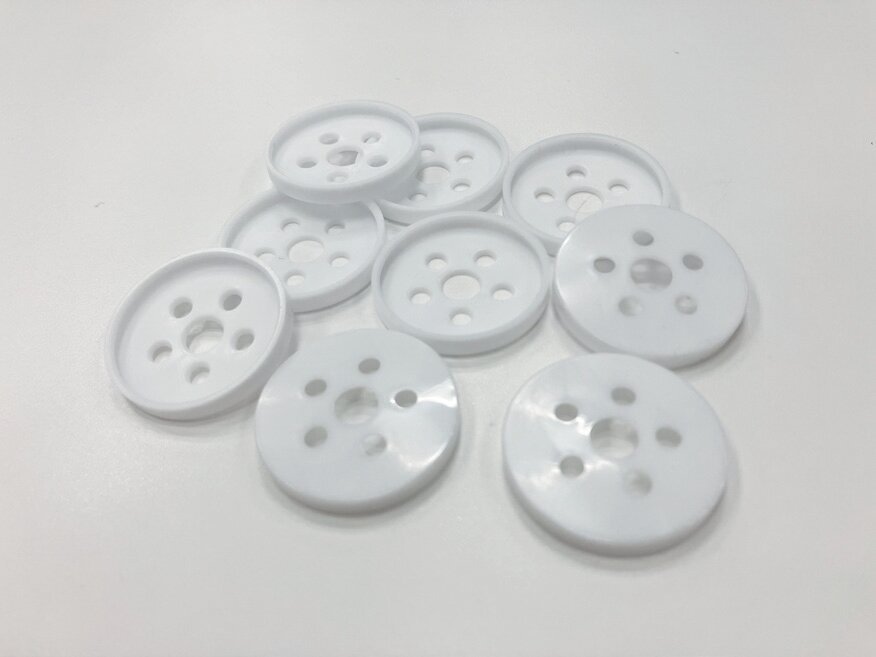 Molded product
Molded product
Reduced cycle time
"With hydraulic machines, variation in mold opening position occurred due to changes in oil temperature, making it impossible to open mold opening quickly. However, with the help of electric motors, there is no fluctuation in mold opening position even when opening quickly, allowing for stable molding," said the customer, who has experienced a reduction in cycle time. In addition, although the filling speed was low to allow the gas to escape, the use of the low injection pressure function (FFC) has made it possible to fill without slowing down the speed, which has also contributed to shortening the cycle time.
| Products |
Cycle time reduction rate |
| Inner plug A |
14.8 % |
| Inner plug B |
13.4 % |
| Inner plug C |
12.9 % |
| Stationary part A |
18.0 % |
| Cap A |
4.0 % |
No need for annealing
Until now, filling was done to prevent sink mark, so the dimension of molded product tended to become larger. Therefore, the dimensions of the molded products were adjusted by applying heat using a dryer. With the introduction of Zero-molding, this process was no longer necessary, leading to reduced workload and costs. The effect on these potential issues has also been appreciated.
They also said, "Molding can be performed under reasonable molding processes, and the quality of the molded products is stable."
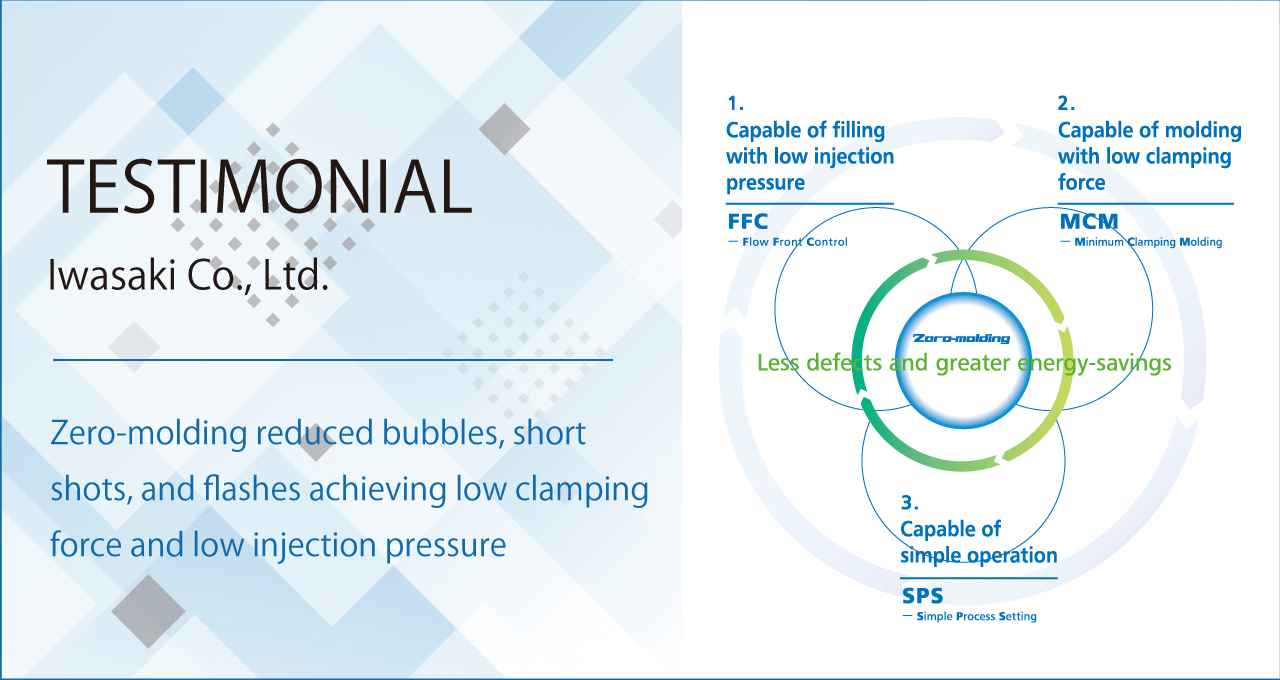
 Factory of Iwasaki Co., Ltd.
Factory of Iwasaki Co., Ltd. Molding scene
Molding scene From left: Mr. Watanabe, Mr. Sawashiro, Mr. Tada
From left: Mr. Watanabe, Mr. Sawashiro, Mr. Tada Molded product
Molded product